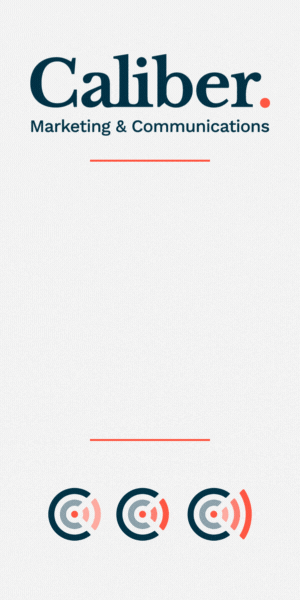Inside Zelle’s growth strategy
/The FR sat down with Denise Leonhard, general manager of payments network Zelle, for a wide-ranging conversation on how Zelle became a mainstream player in U.S. payments, surpassing a transaction milestone of $1 trillion in 2024. Zelle is operated by Early Warning Services, a fintech company owned by a consortium of the largest U.S. banks. Comments have been edited for clarity.
Much of the conversation around Zelle’s growth has focused on expanding adoption across banks of all sizes. What steps has Zelle taken to encourage broader bank participation?
Our relationships with the more than 2,200 financial institutions on the Zelle network — 95% of which are community banks and credit unions — are extremely important to us. Many of these rural, community, and minority-owned or -led banks are in areas of the country where people have fewer banking options. We are constantly thinking about how best to reach them because we believe Zelle is a critical offering for these financial institutions, helping them to compete and retain customers by providing access to the same technology available to larger banks.
The fact that we can help community banks and credit unions offer a truly vital financial tool to their customers has been a key driver of growth. We are also in constant communication with our banking partners to see how we can improve experiences.
Zelle’s user experience has become more standardized across different banking apps over time. Can you walk through the journey toward a more consistent UX?
This has been a major focus for our product and design teams. Our design teams conduct extensive research and connect with users about how they use Zelle, what is working, and what could improve.
They take those insights back to our product teams and our bank partners to implement them and ensure that the user experience for Zelle is optimized for everyone, regardless of where they bank. It is a constant and collaborative effort, but it definitely makes a difference to ensure our users have a consistent and easy experience.
The vision for Zelle has always been a solution that allows people to send and receive money to and from those they know and trust directly between bank accounts. Today, the vast majority of people using Zelle to send money use it through their financial institution’s mobile app or online banking experience, and we believe this is the best place for Zelle transactions to occur.
Zelle-related scams have been widely reported, with some banks required to refund victims. What steps are being taken to combat fraud, and how can you reassure consumers that Zelle is a safe platform?
We have a multilayered approach to countering scam and fraud and a strong set of controls in place, but the job is never done — we're constantly evolving to try to outsmart criminals. The fact is fraud and scams are an issue that transcends industries, and the solution requires everyone — law enforcement, government, and private industry — to work together to stop criminals from taking advantage of hard working Americans.
Looking ahead, Zelle is a founding member and executive sponsor of the National Task Force for Fraud & Scam Prevention, a cross-industry partnership that will develop recommendations for a national strategy to prevent fraud and scams.The task force is working to address different aspects of the fraud and scam lifecycle by sharing intelligence across industry, government, and law enforcement to increase prevention and detection, exposing and prosecuting criminals, and educating consumers on how to spot and report scams.
With Zelle surpassing $1 trillion in transactions in 2024, what does this milestone signify? Has the platform achieved the ubiquity it aimed for when it launched in 2017?
Zelle is not just popular, it’s a tool U.S. consumers rely on that’s transforming how money moves across the financial system. We crossed $1 trillion in transactions in 2024, shattering previous records. That’s just shy of $2 million a minute, but it's not just a big number; it’s a testament to the trust millions of hardworking consumers and small businesses place in Zelle every single day.
We’ve also seen an extraordinary growth in the use of Zelle among small businesses, with more than 500 million transactions totaling $283 billion in 2024. As far as ubiquity, we remain focused on ensuring that all U.S. consumers can access Zelle!
The fourth quarter of 2024 was Zelle’s strongest to date. What factors contributed to this growth?
The main growth driver is trust: Americans trust and rely on Zelle.The fourth quarter was strong for us because it was the holiday season. People are chipping in for holiday parties, paying each other back for gifts, or splitting the share of a festive meal. If you add those seasonal use cases to our most common use cases based on optional memo field data — like paying rent — it accounts for the significant uptick in Q4. Beyond that, a standout use case in 2024 was small businesses.
Zelle offers small business customers flexible, efficient ways to pay – and it gives small business owners a fast, reliable way to send money. Think about it: When you’re running a small business, time is money, and Zelle delivers both. It’s a valuable and needed tool for America’s Main Street — the backbone of our economy.
How does peer-to-peer usage compare to other transaction types? How did Zelle’s business transactions perform?
Peer-to-peer payments are growing quickly, as our recent numbers show. We still see a big opportunity in replacing cash and checks with a faster, more convenient, and often safer option like Zelle — especially when it comes to specific use cases, like paying rent or your bills. While peer-to-peer payments are by far the primary use case for Zelle, we are increasingly seeing small businesses use it as a driver of transaction growth.
Almost one in four Zelle senders — totaling 23 million users — sent a payment to a small business in Q4. In 2024, small businesses sent or received 500 million transactions. These transactions totaled $283 billion, a 32% increase from the previous year.
Why are we seeing this increase? Because small business owners across the U.S. continue to rely on the unique features of Zelle to provide their customers with flexible ways to pay, keep their business running by paying office rent or settling with a local vendor, or perform everyday tasks like paying employees – directly into their bank account.
From farmers markets to the local handyperson, Zelle empowers small business owners with a secure and reliable way to get paid and access their funds immediately — so they can reinvest in new supplies, pay their employees, or put food on the table for their families.
That said, there is still room for growth, and we are constantly looking for new ways to help business owners save time and money by using Zelle – including new features and ways of paying.





